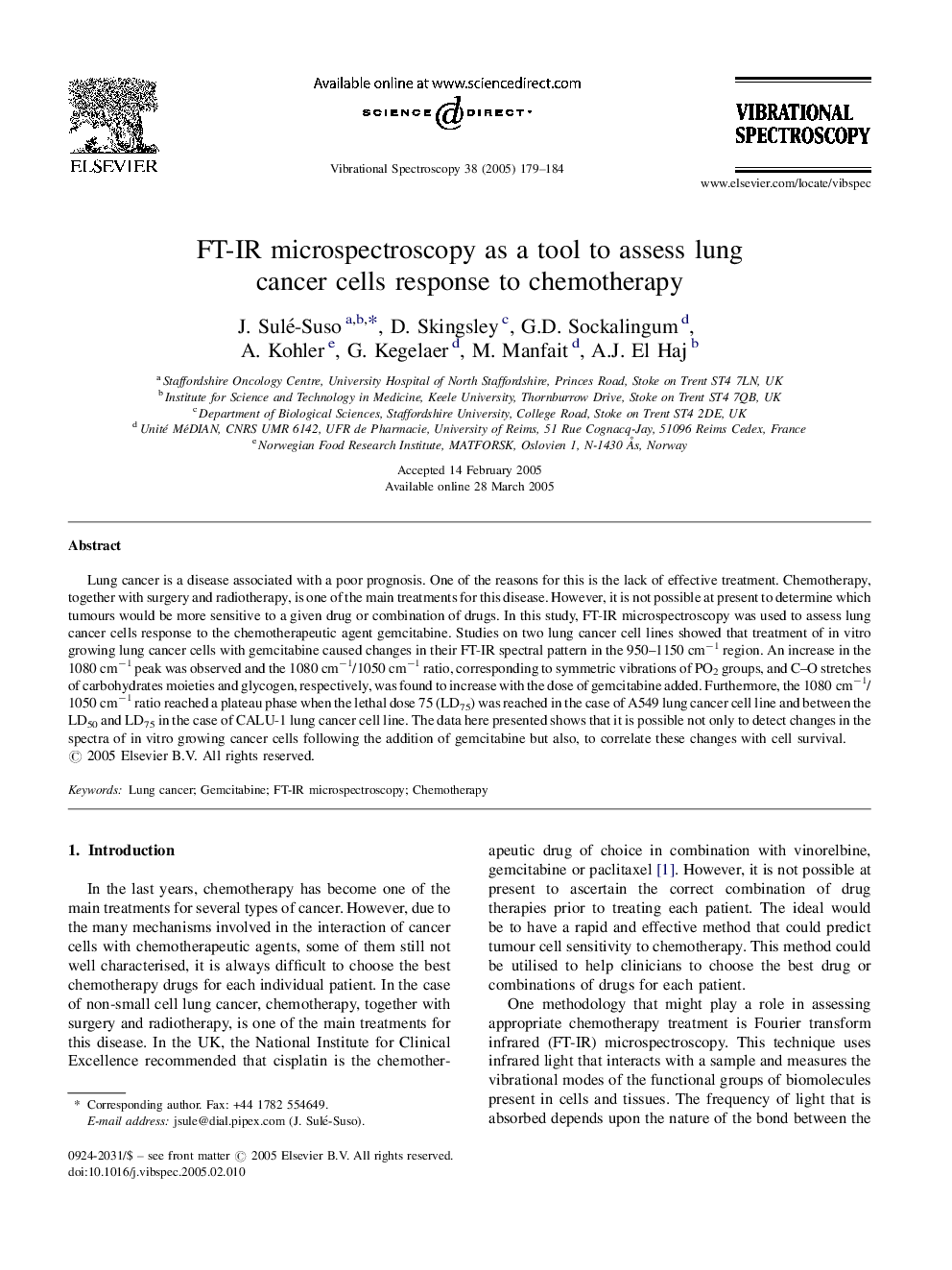| Article ID | Journal | Published Year | Pages | File Type |
|---|---|---|---|---|
| 9757470 | Vibrational Spectroscopy | 2005 | 6 Pages |
Abstract
Lung cancer is a disease associated with a poor prognosis. One of the reasons for this is the lack of effective treatment. Chemotherapy, together with surgery and radiotherapy, is one of the main treatments for this disease. However, it is not possible at present to determine which tumours would be more sensitive to a given drug or combination of drugs. In this study, FT-IR microspectroscopy was used to assess lung cancer cells response to the chemotherapeutic agent gemcitabine. Studies on two lung cancer cell lines showed that treatment of in vitro growing lung cancer cells with gemcitabine caused changes in their FT-IR spectral pattern in the 950-1150Â cmâ1 region. An increase in the 1080Â cmâ1 peak was observed and the 1080Â cmâ1/1050Â cmâ1 ratio, corresponding to symmetric vibrations of PO2 groups, and CO stretches of carbohydrates moieties and glycogen, respectively, was found to increase with the dose of gemcitabine added. Furthermore, the 1080Â cmâ1/1050Â cmâ1 ratio reached a plateau phase when the lethal dose 75 (LD75) was reached in the case of A549 lung cancer cell line and between the LD50 and LD75 in the case of CALU-1 lung cancer cell line. The data here presented shows that it is possible not only to detect changes in the spectra of in vitro growing cancer cells following the addition of gemcitabine but also, to correlate these changes with cell survival.
Related Topics
Physical Sciences and Engineering
Chemistry
Analytical Chemistry
Authors
J. Sulé-Suso, D. Skingsley, G.D. Sockalingum, A. Kohler, G. Kegelaer, M. Manfait, A.J. El Haj,
